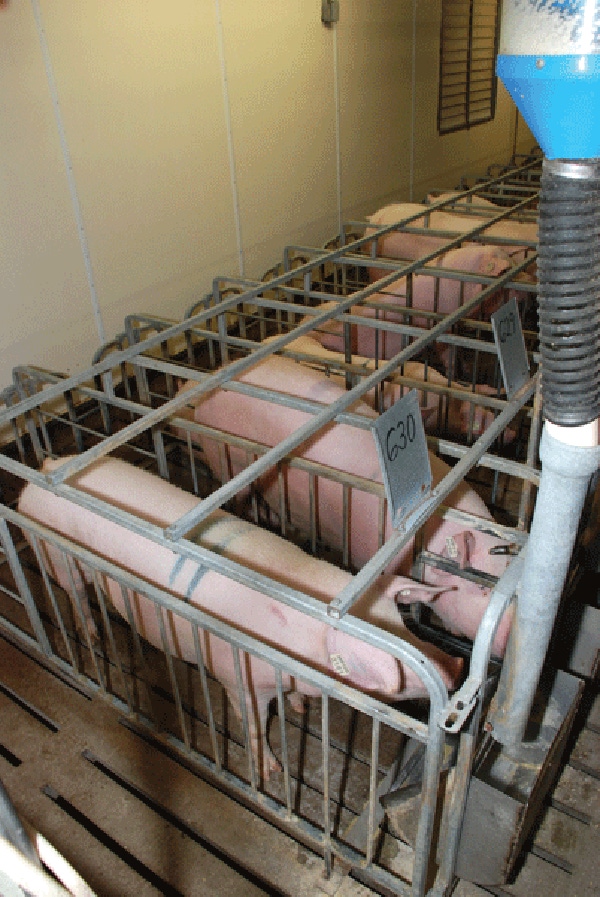Will Sows Fight With Former Neighbors When Mixed?
March 13, 2014

A recent pork checkoff-funded research study investigated whether or not newly mixed sows would fight if they had previously been housed in close proximity in breeding barn stalls.
As researcher Jeremy Marchant-Forde, an animal scientist with the USDA Agricultural Research Service Livestock Behavior Research Unit at Purdue University, notes, the largest single challenge of keeping sows in groups is that of inter-sow aggression. Producers know all too well that sows will fight when mixed and when they have to compete for access to feed. However, Marchant-Forde acknowledges that there is little information on the effects of pre-exposure when sows are mixed together.
The recent USDA ARS research project sought to investigate whether housing sows next to each other in the breeding barn, referred to in the research as the “service house” and designated as an opportunity for “pre-exposure,” would influence the amount of aggression observed when the same sows were subsequently moved into group gestation pens.
Like what you’re reading? Subscribe to the National Hog Farmer Weekly Preview newsletter and get the latest news delivered right to your inbox every week!
The first experiment compared lesion scores, production and behavior of 20 groups of three sows from mixing to farrowing, with sows having previously been housed in service stalls for 35 days postservice.
In one treatment, groups of three penmates were housed in adjacent crates; in the other treatment, groups of three penmates were randomly formed from non-neighbors.
In the second experiment, the treatments were the same, except that the postservice time period prior to grouping was only seven days. Total body lesion scores were significantly higher for pre-exposed sows in the 35-day experiment, and numerically higher in the seven-day experiment. In both experiments, significantly more lesions were seen around the head, neck and shoulders of the sows, indicative of pre-exposed sows engaging in more reciprocal fighting behavior.
Marchant-Forde says detailed analysis of the behavioral data is ongoing, but time budgets indicated no effect of treatment during the early post-mixing period. Closer examination of aggressive behavior so far has shown no significant differences between treatments in aggression, but many of the measures show numerically higher numbers for pre-exposed sows. There is also no effect of treatment on production, with sows in both experiments having similar total litter sizes and numbers born alive and dead.
Overall, the study has shown that pre-exposing sows to each other in service crates prior to mixing appears to be disadvantageous at subsequent mixing. Although neighboring sows will acquire some information about and familiarity with their neighbors, it seems possible that the inability to resolve aggressive interactions within the service crates actually promotes aggressive behavior when the sows are placed into an environment in which aggression can be resolved. Therefore, based on this research, Marchant-Forde recommends that when sows are selected to form groups from the service stalls, non-neighbors should be selected.
You might also like:
Many Factors are Working Together to Impact Pork Supply
You May Also Like



